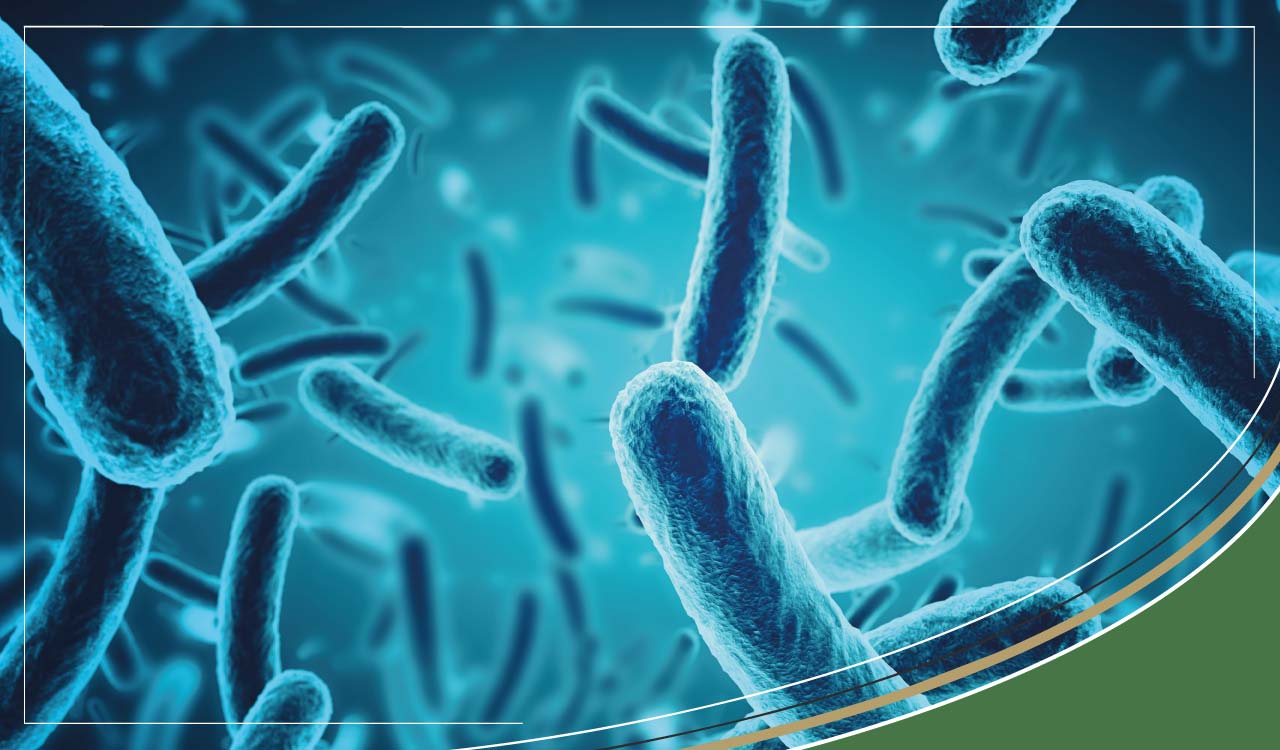Bladder Health
What is e.coli? & Our tips for preventing e.coli infections
By Anna Sawkins
Feb 23, 2022

E.coli - Uniquely Adapted Super Mutator
E.coli, the cause of around 85-90% of bladder infections, is an acid-tolerant bacterium that is uniquely adapted to survive in the human body and can quickly mutate to resist antibiotics. It can travel upwards and attack your kidneys and cause severe kidney problems. The trick is to stop the E.coli in its tracks before it gets to the kidneys.
It is worth telling you a little of what we have learned about E.coli because if you are going to defeat something, you first have to know your enemy.
Escherichia coli, one of the most thoroughly studied of all bacterium, is always present in the human intestine, even in new-born babies. (It is also present in other animals.)
It plays an essential part in the processing of food, and of our waste materials into faeces that we can pass out of our bodies. E.coli is therefore useful to us, and we have also made use of it medically. For example, it is used for genetic engineering, since cultures of E.coli can be made to produce unlimited quantities of the product of an introduced gene.
Escherichia coli (E. coli) bacteria typically live in the intestines of healthy people and animals. Most varieties of E. coli are harmless or cause relatively brief diarrhoea. But a few particularly nasty strains, such as E. coli O157: H7 can cause severe abdominal cramps, severe diarrhoea and vomiting.
You may be exposed to E. coli from contaminated water or food - especially raw vegetables and undercooked ground beef. Healthy adults usually recover from infection with E. coli O157: H7 within a week, but young children and older adults can develop a life-threatening form of kidney failure called haemolytic uremic syndrome (HUS).
E.coli can survive in acidic environments that are lethal to other pathogens, such as in fermented foods like sausage and apple cider. It also survives and even thrives in acidic urine conditions with a PH as low as 5. Cranberry juice or any other acidifying drink when you have an E.coli bladder infection or UTI is therefore pointless, and will probably do more harm than good. Alkalising beverages will, in most cases, help.
E.coli is also an unusually hardy bug. In a study by Abigail F. Weliver, Heat as a Microbial Agent, she said that:
E.coli can grow both aerobically and anaerobically. It can synthesize all its own amino acids, purines and pyrimidines using the nitrogen donor molecule glutamine (Berks, 2002). E. coli is a mesophile, which lives in the temperature range near that of humans, with a growth optimum between 25°C and 40°C (Madigan, 2002)....
She goes on to show that the bug can withstand extended boiling...
The one week old E. coli was tested at 100° C. We predicted that absolutely no E. coli would be able to survive a 100° C environment. However, there were two positive tests - the first being the 10 mL sample at t = 0, and the second being the 0.1 mL sample at 60 minutes.
So it can thrive with or without oxygen, in almost any conditions, and other studies show that E.coli can hibernate in freezing temperatures almost indefinitely. The E.coli bug is, therefore, both creiophilic (can survive freezing, so watch those ice cubes when you are on holiday abroad) and thermophilic (can survive boiling, so that towel may not be as clean as you think...)
And you won't eradicate it by washing something in warm soapy water. In fact, it thrives in those conditions. It can even survive on a bar of soap, for instance.
You can, however, flush it away with D Mannose, and that's important to our story - more on that later...
What is E-coli?
It is called a bacterium or a microorganism or microbe. E. coli is just an abbreviation of the organism's full scientific name: Escherichia coli, named after the German paediatrician, Theodor Escherich, who discovered the bacteria in 1885. Coli refers to its habitat, the colon.
Most E-coli flourish harmlessly in the gastrointestinal tract, or gut, of many animals, (cattle, pigs, sheep and poultry) including humans and serve a useful function combined with other microbes in the digestive process.
There are, however, many strains of Ecoli, ranging from the innocuous to the highly dangerous. The most common foods to contain harmful E. coli are beef, pork, lamb and poultry. Unpasteurized milk, unpasteurized fruit juices, and even raw vegetables can also become contaminated; an example of this is the Spinach outbreak in 2006 when the dangerous form of E.coli O157: H7 was found.
Ecoli O157: H7
E.coli O157: H7 can produce a harmful toxin that causes severe diarrhoea, and is considered a severe condition in particular if the elderly or young are affected. This strain can damage red blood cells, the kidneys and other organs. In ten percent of children, E. coli infection leads to Haemolytic Uremic Syndrome (HUS), which is one of the leading causes of acute kidney failure in children. The spinach and sprout scares do disguise the real problem, and if you were able to trace them back, they would have almost certainly had their origin in the gut of a goat, a sheep, a cow, a pig or a dog, faecal contaminated soil and water etc.
Ecoli is challenging to avoid. It is everywhere, ending up on handles, desks, floors etc. and E-coli is now showing signs of superbug status in the community with the most likely cause being bacterial resistance as a result of overuse in an agricultural context.
Since several million people a year are infected with pathogenic Ecoli, causing bladder infections and worse, for now, prevention is our best protection.
E.coli - Friend or Opportunist
As we have said, E.coli plays an essential part in the processing of food. Unfortunately, E.coli is also one of the most dangerous bugs we could have chosen to share a symbiotic relationship. It is a fast mutator since it multiplies at an enormous rate given the right conditions, (doubling the colony size approximately every 20 minutes) and it is 'opportunist', being non-fussy about where it lives and breeds. It will happily live and reproduce on medical equipment, on your hands, in your mouth, up your nose, on any mucous membrane, in your hair, in your bladder, on your towel, on door handles, toilet seats, and in your water filter.
130 - 175 million cases of reported UTIs occur globally; of that 80 % are associated with E. coli which is therefore responsible for most uncomplicated cystitis cases in women.
A study conducted by the Centres for Disease Control and Prevention posits that urinary tract infections (UTIs) are not always caused by a person’s own E. coli bacteria in the gastrointestinal tract. They discovered, for example, that E. coli found in poultry were strikingly similar to those found in women. Researchers analysed samples of genetic genomes of E. coli found in humans and compared them to samples of E.coli in beef and pork. They discovered the E. coli in chicken best matched that in women.
E.coli has an amazing affinity with the bodies of warm-blooded animals like us. The entire bug (the variety that can stick to the bladder) is covered with molecular hairs (fimbria or pili with lectins - the special molecules that attach to mannose) that stick like Velcro to the cell walls of body tissue and anything else with the correctly oriented mannose molecules (likeD-Mannose ).
E.coli and D-Mannose
Now comes the interesting bit. During our research into the behaviour of E.coli, we discovered that they attach to a sugar-type substance called d-mannose, which our body produces naturally as part of the walls of cells. This d-mannose is typically present in the bladder and the urinary tract, providing the ideal docking ports for the E.coli. We don't have perfect bodies, and nature has messed things up because if it weren't for the d-mannose in the cell walls, any E.coli that managed to get up the urethra would be flushed away in normal urination. But they are not. They get up there, and they find a docking port, and they start to multiply. And that's when the trouble begins. They burrow their way into the walls of the bladder, which somehow doesn't recognise them as enemies, and embraces them as if they were fond friends. Making them very difficult to get rid of withoutD-Mannose. And the fact that they bury themselves in the bladder wall and biofilms form is one explanation of repeat attacks of cystitis.
The cell walls of the E.coli bacterium are covered with minute fimbria (hairs) with lectins (molecular projections)...
...that hook like Velcro to the mannose in the walls of the bladder and urinary tract.
E.coli-colony
In this photo, the E.coli are the 'docked' white egg-shaped cells. The E.coli love the d-mannose in the cell walls. The mannose receptors love to have lectins attached.D-Mannose occupies the E.coli lectins, preventing attachment.
When we discovered this attraction of E.coli for the mannose receptors in cells, the thought occurred that by providing a richer supply of the mannose we could persuade the E.coli in the urine to attach to the free mannose instead of the cell wall mannose. To this end, we started hunting around for a supply of d-mannose, and we discovered that in the USA some doctors had already researched this use of d-mannose, and were recommending it to patients.
We already knew that using antibiotics against bladder infections frequently led to more resistant E.coli, thrush, and long-term antibiotic-related complications.
The problem is that bacteria are immensely adaptable critters. Expose them to antibiotics long enough, and they'll evolve ways to survive the drugs.
Abigail A. Salyers - University of Illinois.
We had heard small amounts of d-mannose could be found in cranberry, but acidifying the urine just makes the infections worse, so that was a non-starter. It's also present in small quantities in other foods, but uneconomical to extract. In the end, we had to do the research and search the world to find a high-quality natural source of d-mannose that could meet our exacting production requirements (Anna was very damaged by a drug, so our ethos has and always will be First Do No Harm) and a perfect alpha/beta ratio.
We give guidelines based on customer feedback on how to use our trademarked D Mannosefor E.coli infections based on many years of customer feedback and our own research.
Why are customers looking desperately for new methods to deal with bacteria?
We think it is because more and more people are becoming aware of the dangers of overuse of antibiotics. Increasingly, we talk to people who have acquired resistant strains of bacteria (ESBLs) that are, in their cases, no longer responding well enough to antibiotic therapy.
Most people are already familiar with the superbug MRSA, and C. Difficile, but not yet have heard of ESBL. ESBL-producing bacteria have joined the growing number of antibiotic-resistant pathogens that cause hospital-acquired and now community infections. ESBL bacteria are different from other superbugs because ESBL does not refer to one specific kind of bacteria. (For instance, MRSA refers specifically to methicillin-resistant strains of Staphylococcus Aureus.)
ESBL’s (Extended Spectrum Beta-Lactamases) are enzymes made by some bacteria, including Klebsiella and E. coli amongst others. Usually, ESBL’s are harmless and live in the body without causing infection.
EBSL refers to an antibiotic-resistance enabling enzyme that the bacteria are producing, as a means of protecting themselves against attack. Sometimes, however, ESBL’s get into a part of the body where they do not belong, like the blood or urine and that is when we experience problems. It would seem that bacteria have responded to the worldwide overuse of antibiotics in farming and medicine by creating beta-lactamase, an enzyme that can give the bacteria immunity to each new attack they encounter.
ESBL enables resistance not only to penicillin, but to cephalosporin antibiotics also (antibiotics whose names begin with “Cef-”).
Many different species of bacteria can produce the ESBL enzymes although the most common ESBL producing bacteria are E. coli and Klebsiella. Both are common culprits in urinary tract infections (UTIs).
Preventing an E-Coli Infection
Boiling water for 5 minutes will destroy bacteria, viruses and parasites. Freezing will not.
You can help protect yourself and your family to some extent against E. coli infection by adhering to these basic suggestions:
- Do not drink/eat fruit juices, ciders, milk and cheeses which are unpasteurised.
- Wash all fruits and vegetables, including those you peel or cut, such as melons, oranges, cucumbers.
- Wash hands with hot, soapy water after using the toilet, changing diapers, before preparing food and after visits to farms or petting zoos, and before eating a picnic etc.
- When buying meat, make sure the package is not dripping juices. Put the meat in a plastic bag and store away from all other food.
- Freeze or refrigerate meat as soon as possible after purchase.
- Thaw meat in the microwave, or overnight in the fridge, NOT at room temperature.
- Wash hands with hot, soapy water for twenty seconds, before and after handling raw meat.
- Cook burgers and other minced meat thoroughly, never to just pink.
- Separate raw and cooked produce, don’t cross-contaminate. Store meat/poultry/ seafood separately in bottom of the fridge.
- Use a separate cutting board for raw meat/poultry/seafood.
- Place washed produce into clean containers, not back into the original packaging.
- Thoroughly wash and then sanitise with a diluted bleach solution all utensils and cutting surfaces used when handling of raw meat.
- Change dishcloths, and tea towels often - machine wash in very HOT water and detergent.
When to See Your GP
It is important to see your GP if you have experienced diarrhoea for over five days (Two days for a young child). If you have a fever, pain in the abdomen that continues after you have opened your bowels, blood or pus in your stool, if you have been vomiting for more than twelve hours or if you are dehydrated (minimal urine output, extreme thirst and dizziness).
 Free Shipping on orders $100+ SGD
Free Shipping on orders $100+ SGD
 Worldwide Delivery Available
Worldwide Delivery Available
 Rated 4.9 out of 5 on Trustpilot
Rated 4.9 out of 5 on Trustpilot



















